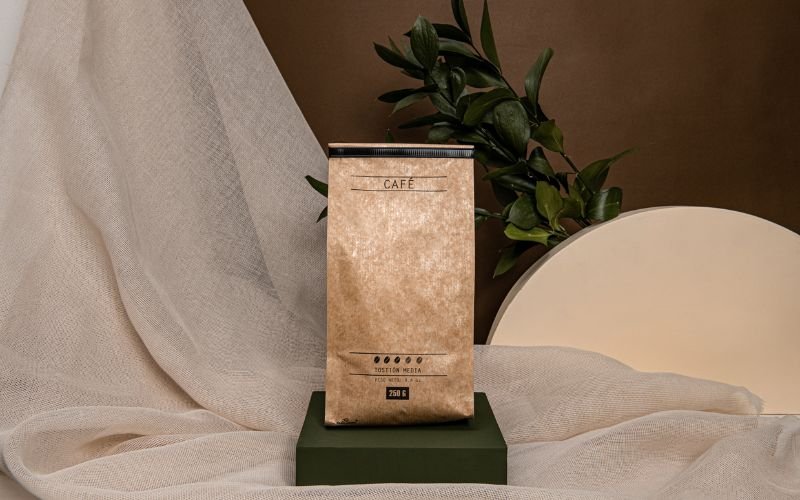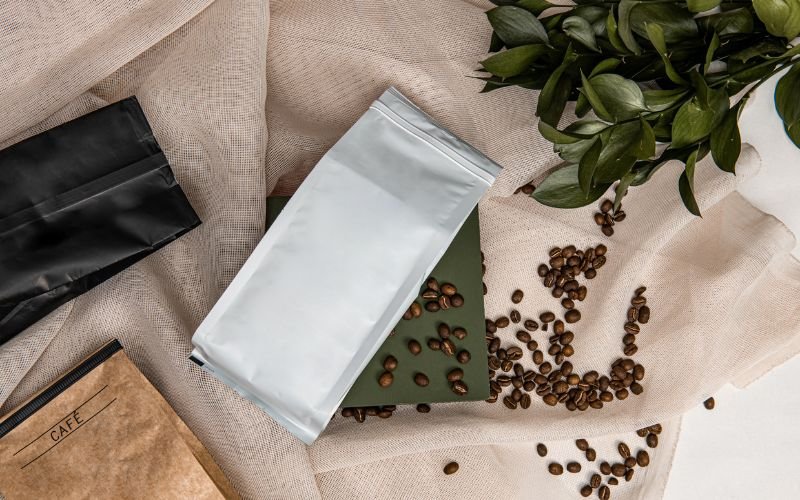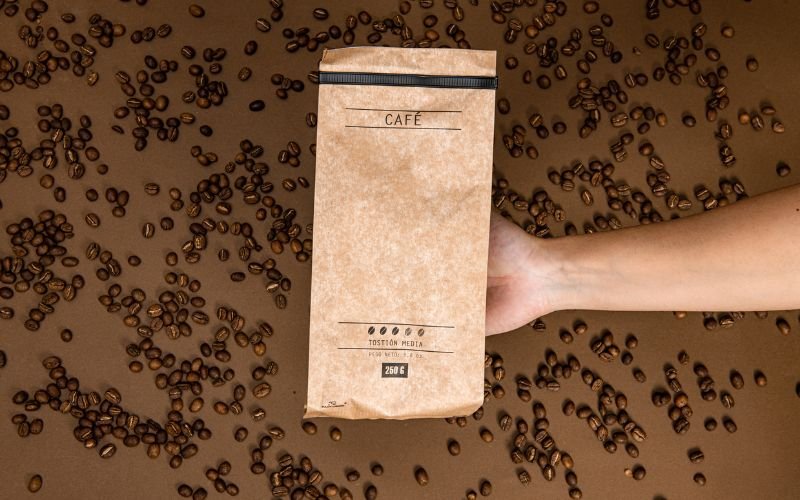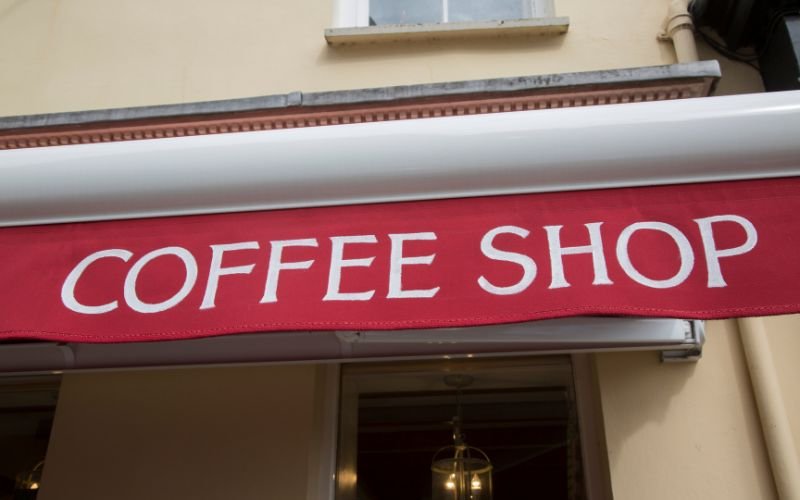1. Introduction
The Growing Demand for Sustainable Coffee Packaging
In recent years, consumer demand for sustainability has reached unprecedented levels. Coffee, as one of the world’s most consumed beverages, has inevitably become a focal point in the shift toward more eco-conscious products. From packaging waste to carbon emissions, the environmental impact of coffee production and consumption is substantial. As sustainability becomes a key value for modern consumers, brands are increasingly under pressure to adjust their packaging methods accordingly.
However, the transition is not without its complexities. Businesses face the challenge of balancing the environmental benefits of sustainable packaging with the financial realities of higher production costs. Finding this balance is crucial not only for long-term success but also for ensuring the survival of our planet’s natural resources.
The Challenge of Balancing Cost and Environmental Impact
The pursuit of sustainable packaging solutions is often seen as a trade-off between long-term environmental impact and immediate financial viability. Eco-friendly materials often come with higher upfront costs, which can be a significant barrier for small and mid-sized coffee brands. Packaging innovation, which often requires research and development, further complicates this balance. However, brands that successfully navigate this challenge stand to gain a competitive advantage in a market that is increasingly looking for sustainable alternatives.

2. The Importance of Sustainable Coffee Packaging
Why Sustainability Matters in the Coffee Industry
The coffee industry is a major contributor to environmental degradation. From the extensive water and energy consumption required to grow coffee to the waste produced by single-use plastic packaging, the industry’s carbon footprint is substantial. Packaging, in particular, plays a significant role in this impact. Traditional packaging methods, such as plastic bags and laminated pouches, are not biodegradable, leading to landfill accumulation and pollution of natural ecosystems.
Adopting sustainable packaging materials is not just a trend—it’s a necessary response to growing environmental concerns. Brands that prioritize sustainability are aligning themselves with global movements aimed at reducing waste and conserving resources, ensuring their long-term viability.
Consumer Expectations and Environmental Responsibility
Consumers are becoming increasingly aware of the environmental costs associated with their purchasing decisions. The rise of eco-conscious buyers has pushed coffee companies to adopt greener practices or risk alienating their customer base. According to various studies, nearly 70% of consumers are willing to pay more for products with sustainable packaging. This shift in consumer behavior is forcing coffee brands to rethink their packaging strategies in a way that balances both sustainability and cost-effectiveness.
3. The Cost Implications of Sustainable Packaging
Understanding the Economic Impact of Switching to Sustainable Materials
Transitioning to sustainable packaging materials is undoubtedly a costly endeavor. Biodegradable materials, recyclable solutions, and compostable options typically come with a higher price tag compared to traditional plastic and aluminum packaging. While businesses may see an increase in initial expenditure, they may also benefit from reduced waste management costs, potential government incentives, and higher product prices driven by consumer willingness to pay a premium for sustainability.
However, the shift toward sustainability requires more than just material changes. It requires logistical adjustments, such as sourcing new suppliers, potentially revising production lines, and redesigning packaging to accommodate new materials. These costs can add up quickly, which is why many companies hesitate to make the switch.

Comparing Traditional vs. Eco-friendly Packaging Costs
- Traditional Packaging: Lower upfront costs, but this may not account for the environmental and social costs of continued use. As global regulations around plastic waste tighten, future costs of non-compliance or the need for waste management may escalate.
- Eco-friendly Packaging: Though the initial investment may be higher, the long-term benefits include improved brand loyalty, better environmental impact, and the potential for cost reductions as economies of scale come into play and innovation drives prices down.
4. Types of Sustainable Coffee Packaging Materials
Biodegradable and Compostable Options
Materials such as plant-based plastics and paper are gaining popularity due to their ability to break down more quickly than conventional plastics. Compostable packaging, designed to break down in controlled environments, is another key option. These materials allow businesses to reduce their reliance on landfill spaces and help close the loop on waste by creating products that can be returned to the earth.
Recyclable Packaging Solutions
Recyclability is one of the most commonly sought-after characteristics of sustainable packaging. Materials such as glass, aluminum, and certain plastics can be recycled multiple times, reducing the need for virgin materials. However, challenges remain with the recyclability of certain coffee packaging materials, which are often multi-layered or coated in non-recyclable substances.
Innovations in Edible and Plant-Based Packaging
Emerging technologies in edible and plant-based packaging have the potential to revolutionize the coffee industry. Companies are exploring materials such as seaweed, rice husks, and algae to create packaging that is both compostable and edible. These innovative materials reduce waste and provide a unique selling point for eco-conscious consumers.

5. Finding the Right Balance: Cost vs. Sustainability
How to Evaluate the Long-term Savings of Sustainable Packaging
Switching to sustainable packaging requires careful consideration of the long-term financial benefits. Although the upfront costs may seem prohibitive, brands should evaluate the potential for long-term savings in areas such as waste disposal, energy consumption, and product integrity. For example, biodegradable materials that protect against moisture and air may prolong the shelf life of coffee, reducing spoilage and waste.
Weighing Initial Investment Against Future Environmental Benefits
It is critical to take a long-term view when considering the economics of sustainable packaging. While the transition involves upfront investments in new materials, production methods, and redesigns, the environmental benefits, such as reduced carbon emissions, less landfill waste, and fewer plastic-based products, provide significant returns over time.
6. Case Studies: Brands That Have Successfully Balanced Cost and Sustainability
Examples of Coffee Brands Leading the Way
- Lavazza: This Italian coffee brand transitioned to a fully recyclable coffee bag made from paper and other eco-friendly materials. By investing in recyclable packaging, Lavazza positioned itself as a sustainability leader in the coffee industry, appealing to both eco-conscious consumers and those seeking high-quality coffee.
- Peet’s Coffee: Peet’s has adopted compostable coffee bags made from plant-based materials. By prioritizing sustainable packaging, they have not only reduced their environmental footprint but also appealed to a growing segment of customers who prioritize sustainability in their purchasing decisions.
Lessons Learned from Their Sustainable Packaging Initiatives
- Effective Communication: Brands must communicate their sustainability efforts clearly. Transparency about packaging sourcing, material choices, and end-of-life disposal is key to building consumer trust.
- Supplier Relationships: Working closely with suppliers can unlock new packaging innovations and cost-saving opportunities. By collaborating on sourcing and production, brands can better control costs while maintaining sustainability goals.
7. Overcoming Common Challenges in Sustainable Packaging
Addressing Supply Chain Issues and Material Sourcing
The sourcing of sustainable materials can be challenging, particularly for small businesses that lack the purchasing power of larger corporations. Supply chain issues, such as limited availability of eco-friendly materials or price fluctuations, may hinder a brand’s ability to adopt sustainable packaging on a large scale.
Balancing Quality and Eco-friendliness
Eco-friendly materials must maintain the same quality and performance as their traditional counterparts. For coffee brands, this means ensuring that packaging protects the beans from light, air, and moisture while preserving freshness. Packaging that fails in these areas may compromise the product and negatively affect customer satisfaction.
Managing Consumer Perceptions on Price Increases
While eco-friendly packaging is an investment in the future, it can come with a price increase. Brands must manage consumer perceptions of these price hikes by clearly explaining the value of sustainable packaging and its role in preserving the environment for future generations.
8. Future Trends in Coffee Packaging Sustainability
How Innovations Will Drive Costs Down
The future of sustainable coffee packaging lies in technological advancements that reduce both material and production costs. Innovations in biodegradable coatings, recyclable materials, and digital printing could drive down prices, making sustainable packaging more affordable for all coffee brands.
The Role of Policy and Regulations in Shaping Packaging Choices
Governments worldwide are introducing stricter packaging regulations, including bans on single-use plastics and requirements for recyclable materials. Staying ahead of these regulatory shifts can not only help brands avoid fines but also position them as leaders in sustainability.
9. Steps to Take for Coffee Brands to Transition to Sustainable Packaging
Conducting a Packaging Audit: Identifying Areas for Improvement
Coffee brands looking to transition should start by evaluating their current packaging. A packaging audit can help identify materials that could be replaced with more sustainable options and assess the overall environmental impact of current practices.
Working with Suppliers to Source Sustainable Materials
Building strong relationships with suppliers who specialize in sustainable packaging can help brands source affordable and high-quality materials. Collaboration is essential to identify solutions that fit both environmental goals and budget constraints.
Educating Consumers About the Value of Eco-friendly Packaging
Coffee brands should invest in educating consumers about the importance of sustainable packaging. This can be done through marketing campaigns, product labels, and educational content that highlights the environmental impact of packaging choices.
10. Conclusion
The Path to Sustainable Coffee Packaging for the Future
As sustainability becomes an imperative for both consumers and brands, the path forward is clear. By carefully balancing cost considerations with the long-term benefits of eco-friendly packaging, coffee brands can contribute to a greener future without sacrificing quality or consumer trust.
Encouraging Industry-wide Change for a Greener Coffee Experience
The coffee industry is at a crossroads. To create a truly sustainable future, brands, suppliers, and consumers must work together. The collective adoption of sustainable practices will not only reduce waste and carbon emissions but also contribute to a more resilient and eco-conscious coffee industry.
FAQs
Why is balancing cost and sustainability important in coffee packaging?
Balancing cost and sustainability is crucial for coffee brands to meet growing consumer demand for eco-friendly products while maintaining profitability. Sustainable packaging can improve brand reputation, but it often comes with higher initial costs that need to be carefully managed.
What are the most cost-effective sustainable packaging options for coffee?
The most cost-effective sustainable packaging options include recyclable materials like paper, aluminum, and biodegradable plastics. These materials offer a balance between environmental impact and cost, though the overall savings may increase as production scales.
How can coffee brands measure the long-term cost savings of switching to sustainable packaging?
Long-term cost savings can be measured by evaluating reduced waste disposal costs, potential tax incentives for sustainable practices, and the value of brand loyalty from eco-conscious consumers. Additionally, improving shelf life with sustainable packaging may reduce product spoilage and losses.
Are sustainable coffee packaging materials more expensive than traditional packaging?
Yes, many sustainable packaging materials, such as biodegradable plastics or compostable bags, often come with a higher upfront cost compared to traditional plastic or foil packaging. However, the financial impact can be mitigated over time through consumer willingness to pay a premium and possible future cost reductions.
How do consumer preferences impact the cost of coffee packaging?
Consumer preferences for eco-friendly packaging drive the demand for sustainable materials, which may result in higher packaging costs. However, this demand can also lead to greater economies of scale, as more companies adopt these solutions, potentially reducing costs over time.
What role do regulations play in balancing cost and sustainability in coffee packaging?
Regulations are increasingly dictating packaging requirements, such as bans on single-use plastics or mandates for recyclability. These regulations can force companies to adopt more sustainable packaging solutions, potentially increasing short-term costs but ensuring compliance and reducing future penalties.
How can coffee brands offset the higher costs of sustainable packaging?
Coffee brands can offset higher costs by raising product prices, particularly in markets where consumers value sustainability. Additionally, brands can explore bulk purchasing, long-term supplier agreements, and recycling programs to reduce material costs over time.
What innovations in coffee packaging are expected to reduce costs while maintaining sustainability?
Innovations such as plant-based packaging, edible packaging, and advanced recycling technologies are expected to reduce costs in the future. As these technologies mature and scale, they will likely offer more affordable options for coffee brands while maintaining a strong commitment to sustainability.




